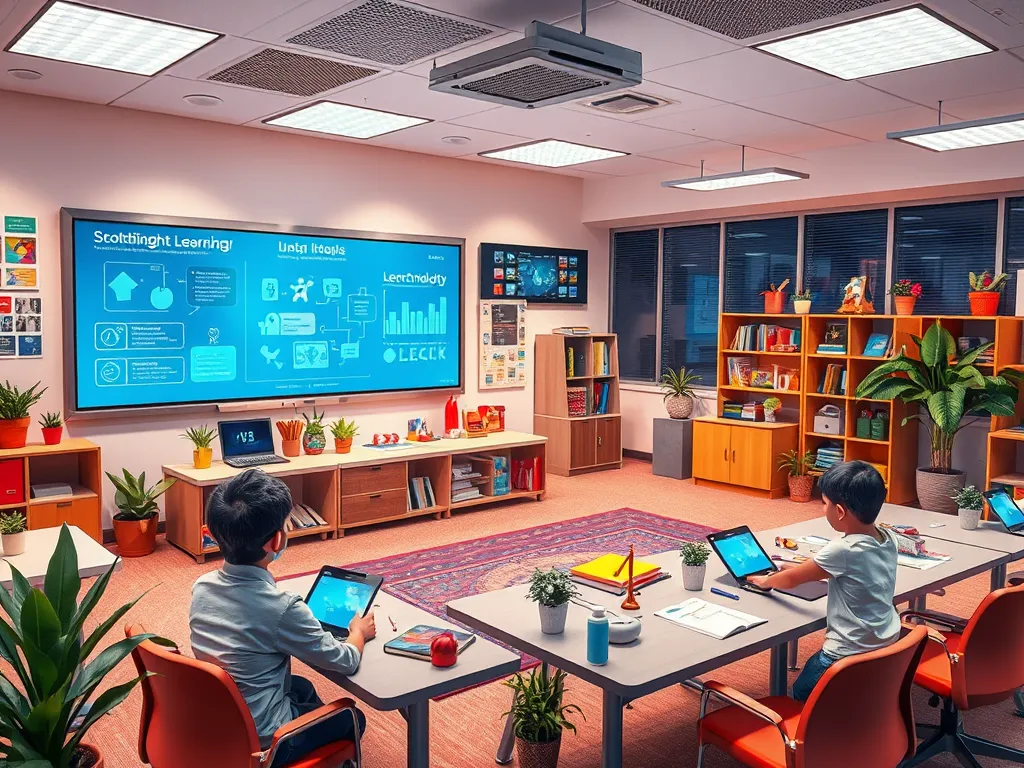
Exploring Interactive Learning Experiences
Interactive Learning Experiences revolutionize the educational landscape by actively engaging students in the learning process, promoting deeper understanding and retention. Whether through technology or hands-on activities, these experiences emphasize active participation over passive observation, creating a dynamic and immersive classroom environment.
The essence of Interactive Learning Experiences lies in the collaboration between learners and educators. By fostering an environment where questions are encouraged and exploration is a norm, students become partners in their learning. This shift from traditional teaching methods to interactive ones caters to diverse learning styles, making education more accessible and effective.
In today’s digital age, the prevalence of technology has further transformed how Interactive Learning Experiences are facilitated. Online platforms, virtual simulations, and collaborative tools have expanded opportunities for engagement, making learning not only informative but also enjoyable. Through these modes, students can connect with peers around the world, gaining perspectives that enhance their understanding of global issues.
Interactive Learning Experiences also prioritize real-world applications of knowledge, whereby students can engage in simulations and projects that reflect real-life scenarios. This hands-on approach equips learners with practical skills and enhances their critical thinking abilities, paving the way for lifelong learning.
Ultimately, the goal of Interactive Learning Experiences is to create a learner-centered environment that fosters curiosity, collaboration, and creativity. By leveraging interactive methodologies, educators can inspire students to take ownership of their learning journey, fully preparing them for future challenges.
Benefits of Interactive Learning Experiences
One of the most significant benefits of Interactive Learning Experiences is the enhancement of student engagement. Through interactive methods, students are more likely to participate actively in their learning. This engagement increases motivation and interest, leading to a more enjoyable educational experience.
Furthermore, Interactive Learning Experiences have been shown to improve retention rates. When students engage with material through experiential learning, they are more likely to remember and understand the content. This retention is crucial for building upon knowledge as students advance in their studies.
Engaging students in the digital age requires embracing innovative approaches, such as Interactive Learning Experiences, that promote active participation.
Additionally, these experiences boost creativity and critical thinking skills in learners. By encouraging students to explore different viewpoints and problem-solving techniques, Interactive Learning Experiences cultivate an environment where innovative ideas can flourish. As a result, students develop essential skills that are highly valued in today’s workforce.
Real-world application of knowledge is another key advantage of Interactive Learning Experiences. Students engage in simulations and case studies that mirror real-life situations, allowing them to apply theoretical knowledge practically. This experiential learning helps bridge the gap between academia and industry, preparing students for post-educational challenges.
Moreover, collaboration and teamwork are fostered in interactive settings. Through group projects and peer-to-peer learning, students develop essential interpersonal skills, including communication, teamwork, and conflict resolution. These skills are critical for personal and professional success in the future.
Types of Interactive Learning Experiences
Project-based learning stands out as a hands-on approach where students engage in real-world projects, allowing them to apply academic concepts to practical problems. This active learning method helps students retain information better and provides a sense of accomplishment.
Role-playing games are another effective method for immersive learning. By stepping into different characters or scenarios, students explore complex topics and develop empathy. This method encourages students to think critically about varying perspectives and make informed decisions.
Technology-driven interactive simulations bring a whole new level of interactivity to learning experiences. These simulations provide students with realistic environments to practice skills, experiment with ideas, and learn from their mistakes without real-world consequences.
Collaborative group work and peer teaching are essential components of Interactive Learning Experiences. By working together, students share knowledge and embark on a common learning journey, allowing them to learn from one another and develop teamwork skills.
Flipped classroom models promote participation by reversing traditional teaching methods. In this approach, students engage with instructional content at home and participate in hands-on activities during class time, fostering deeper discussions and active learning.
Implementing Interactive Learning Experiences
Designing curricula that integrate interactive elements is crucial for implementing Interactive Learning Experiences. Educators should seek to incorporate various interactive strategies into their lesson plans, ensuring that all aspects of learning remain engaging and relevant.
Utilizing digital tools and platforms can significantly enhance engagement strategies. With the rapid evolution of technology, educators have access to numerous resources that can facilitate interaction and collaboration among students, making the learning process more engaging.
Training educators to facilitate interactive sessions is essential for the success of these experiences. Professional development opportunities should focus on equipping teachers with the skills to foster an interactive learning environment and utilize various methodologies effectively.
Measuring the success of interactive learning interventions is vital to understand their impact. Educators can utilize feedback, assessments, and observational studies to determine the effectiveness of interactive learning experiences and make necessary adjustments.
Creating inclusive environments for diverse learners is critical in implementing Interactive Learning Experiences. Educators must consider various learning needs and styles, ensuring that all students have equitable access to interactive methodologies.
Challenges in Interactive Learning Experiences
One of the primary challenges in implementing Interactive Learning Experiences is overcoming resistance to change in traditional teaching. Some educators may be hesitant to modify their instructional methods, fearing a loss of control over the classroom dynamics.
Balancing structure with flexibility in interactive formats can also pose a challenge. While a certain level of organization is necessary to guide students, too much structure can limit creativity and exploration.
Addressing varying levels of technology access is crucial, especially in an increasingly digital learning landscape. Educators must ensure that all students have the necessary tools and resources to participate fully in interactive experiences.
Ensuring effectiveness in large classroom settings can be challenging. Personalized interactions can become diluted in larger groups, making it more difficult for students to engage actively and receive individualized attention.
Lastly, managing classroom dynamics and participation rates can be a significant hurdle. Some students may dominate discussions, while others may shy away, leading to unequal participation. Educators must find ways to encourage equitable involvement from all learners.
Future of Interactive Learning Experiences
The future of Interactive Learning Experiences will be significantly influenced by emerging technologies. Innovations such as artificial intelligence, virtual reality, and augmented reality will provide new avenues for creating engaging and immersive learning experiences.
Trends in personalized learning experiences will continue to grow, allowing educators to tailor interactive activities to meet individual student needs and preferences, ultimately enhancing engagement and retention.
The role of virtual and augmented reality in education is poised to expand, providing students with unique opportunities to explore complex topics and environments in a safe and controlled space, further promoting experiential learning.
Integration of gamification in learning will also be an essential trend, as it encourages motivation and engagement through game-like elements, transforming traditional classroom experiences into fun and competitive learning opportunities.
Finally, global access to interactive learning opportunities will become increasingly prevalent. With online platforms facilitating connections between educators and students worldwide, interactive learning experiences will reach a broader audience, promoting global perspectives and collaboration.
